When secondary school teacher Marijke Vandevyvere was growing up in Flanders Fields near Passchendale in Belgium, it was normal for her to visit the many First World War memorials and military cemeteries throughout the area.
Born in the village of Moorslede and brought up on stories including the Battle of Passchendale that took place on the Western Front from July to November 1917, her interest in history was underpinned by the fact her great grandfather was involved in the war.
While he survived, he fell ill afterwards and died soon after hostilities ended.
But how did Marijke, 39, come to dedicate herself to keeping alive the memory of a Perthshire soldier who died during the First World War?
Story of Perthshire First World War soldier was discovered by chance
Her interest began when she became interested in the story of another soldier from New Zealand who is buried at Tyne Cot cemetery near Passchendale.
In 2017, she got in touch with the family of that soldier and embarked on a “rollercoaster” of research.
She became determined to find out more about him as he had Scottish parents.
However, when she and her husband Davy Glorie visited Scotland for the first time in August 2018 to try and find out more about the New Zealand soldier’s family, a chance visit to Pitlochry Parish Church led to the discovery of another connection with her homeland.
Inside the building, she discovered a brass wall-mounted plaque in memory of Major James Lawson Mitchell, the only son of Pitlochry solicitor Hugh Mitchell and his wife Elizabeth.
She was moved to discover that Mitchell of Pitlochry is buried in Vlamertinghe Military Cemetery near Ypres, which is not far from her home.
She was very touched by his story and the fact that he is buried more than 600 miles away from his birthplace.
She vowed then to regularly visit his grave.
“There was a citizen of Pitlochry at that time in the church,” she told The Courier in an interview from Belgium.
“I went over to him and I explained to him that James was buried very near the place where I teach in Ypres, in a military cemetery over there.
“I made a promise that when I got back from my travels that I really wanted to see his headstone and pay my respects.
“So we did and that was the start of everything.”
Who was Major James Mitchell?
Born in the Highland Perthshire town on April 13 1883, Major Mitchell was educated at Ardvreck School, Crieff, Fettes College in Edinburgh and the Royal Military College in Woolwich, London.
He joined The Royal Field Artillery in 1901 and was later deployed to Belgium with the Expeditionary Force and volunteered for the Flying Force.
Major Mitchell was killed in action at Ypres on March 16, 1916 at the age of 32.
In a letter sent to his parents following his death, a Brigade Major wrote: “I can’t tell you how much we all feel his loss, he was absolutely fearless and devoted to duty.”
Major Mitchell’s service batman wrote: “He was looked up to and loved by the officers, NCOs and men under his command, as a ‘father to all’.
“He was a gentleman and soldier of the best type.”
Marijke makes regular visits to the Perthshire First World War soldier’s grave
Marijke visits the soldier’s grave at least twice a year, including Armistice Day.
The first time she paid her respects, she placed a thistle that she brought home from Pitlochry next to the headstone.
However, the other thing the Dutch and human and society subjects school teacher noticed on her first visit was that the date mentioned on the headstone was different to the date she saw on the memorial tablet in Pitlochry.
Contacting the Commonwealth War Graves Commission in 2018, they confirmed the Pitlochry plaque was correct and the headstone was wrong.
Within two months of her query, the headstone was replaced with another.
“It was quite a weird thing to experience that,” said Marijke.
“To think that my visit to the Pitlochry Church on that day made it possible to find that mistake and make that correction.”
Contact with Mitchell’s family and placing of soil in Pitlochry Parish Church
Last year ahead of Armistice Day, she was contacted by the Church of Scotland to find out if it was true that she visits the grave regularly.
It turns out that prior to the war breaking out in 1914, Major Mitchell lived in Japan with his Japanese wife Toyo and their daughter Michiko and was fluent in the language.
His family remained there when he returned to Europe to fight and emigrated to Canada following his death.
Michiko had a son called Morio Ogasawara, who lives in Baden, Ontario, Canada.
The Church of Scotland put Major Mitchell’s grandson in touch with Marijke.
She has been enjoying a “lovely friendship” since, emailing them or WhatsApping them once a week.
However, that’s not where Marijke’s tribute to Major Mitchell ends.
Just a few weeks ago, while travelling back to Scotland on holiday, she placed soil from the military cemetery where Major Mitchell rests in Belgium in a glass jar and placed it next to the Pitlochry Parish Church plaque.
She carried out the poignant act five years to the day after her first visit.
Not only was it “highly emotional” for Major Mitchell’s grandson in Canada, it was emotional for her too.
“I put some soil from Vlamertinghe near the memorial brass tablet in the church – it was a beautiful moment,” she said.
“I also took some soil from Pitlochry to scatter near James’ headstone in Vlamertinghe Military Cemetery.
“Soil anchors roots and roots refer to home in some way.
“There’s now a part of Vlamertinghe in Pitlochry and vice versa.
“James is home again, in a sense.”
What’s the significance of the clay statue?
The glass jar has been placed next to a clay statue which Marijke sent to the church and a photograph of Major Mitchell.
It was part of a remembrance sculptural art project called Coming World Remember Me, which marked the centenary of the First World War (1914-1918).
She added: “These sculptures represent the number of victims who fell on Belgian soil – civilians and soldiers – during the First World War and they have a place on a field near Ypres.”
Marijke says that as a teacher, she was very closely involved in this project from the beginning.
Together with some of her students, she arranged for statues to be sent to a primary school in Pitlochry, the parish church and placed one by James’s headstone.
In Flanders, bombs and shells are regularly removed during excavation works so the war has made many scars in the region and is quite present in daily lives.
For Belgian young people in general, however, she thinks it’s “not easy” for today’s youngest generation to comprehend the horrors of war.
Why is it important to tell stories about the horrors of the First World War?
“They are the fourth generation since the war,” she said.
“They have no living grandparents or something like that who can tell them the stories.
“But by telling stories like what I’m doing now with that one Scottish soldier, you can enlighten them.
“You can bring the history alive and that’s the thing I try to do when I’m at school.
“It’s not about teaching the military stuff I think, because that’s a very difficult part of war history to share with kids.
“You have to tell them stories, you have to share the human part of war.
“What kind of influence it had on humans and their lives.
“I think that in a way, you can tell them about history and make them a part of that story.
“Keeping James’s memory alive is an important link in this unique chain of remembrance as we remind ourselves how deadly this war was and how it still gives birth to special friendships across the miles.”
The solicitors’ firm that Major Mitchell’s father Hugh founded, J&H Mitchell WS, is still in business in Pitlochry today.
Mr Mitchell was a session clerk at Pitlochry Parish Church which also has a plaque in his memory.
James Mitchell didn’t want to follow in his father’s footsteps and become a solicitor and joined the army instead.
What does Pitlochry Parish Church think of the connections being maintained?
Pitlochry Parish Church session clerk Ginnie Wilkie, said it is “wonderful” what Marijke does.
“Marijke has connected with our church through this dead war hero Major James Mitchell who is on our church wall,” said Ginnie.
“Therefore the connection is very much alive for all to see.
“We are so grateful to Maryjka for this touching gesture of caring by the simple act of bringing some earth in a jar.
“I know she regularly puts flowers on his grave in Ypres.
“He has no relatives here in Pitlochry. Just a grandson in Canada.
“I just want to say thank-you to those who look after those war graves so far from home”.
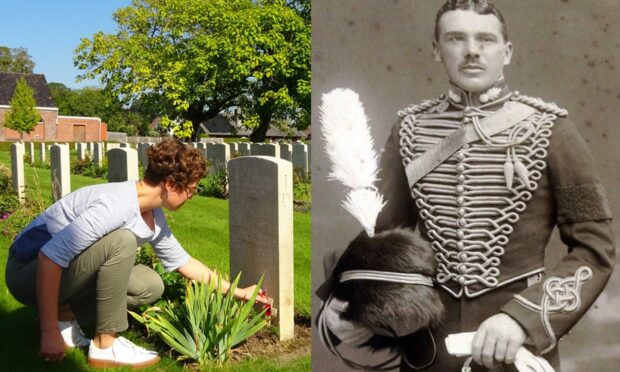
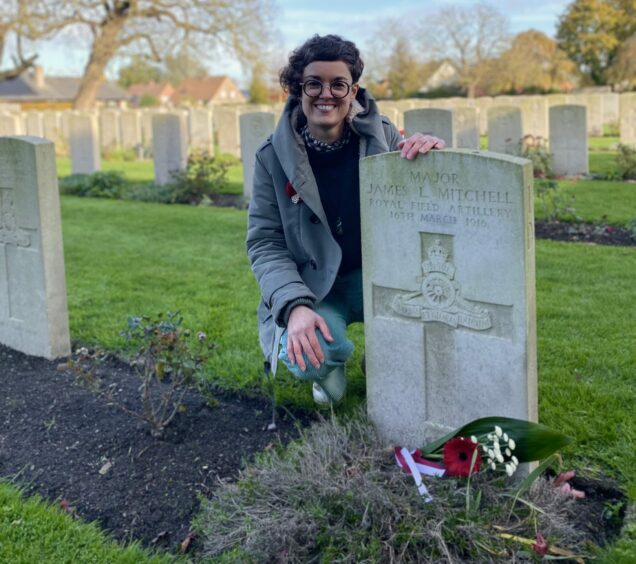
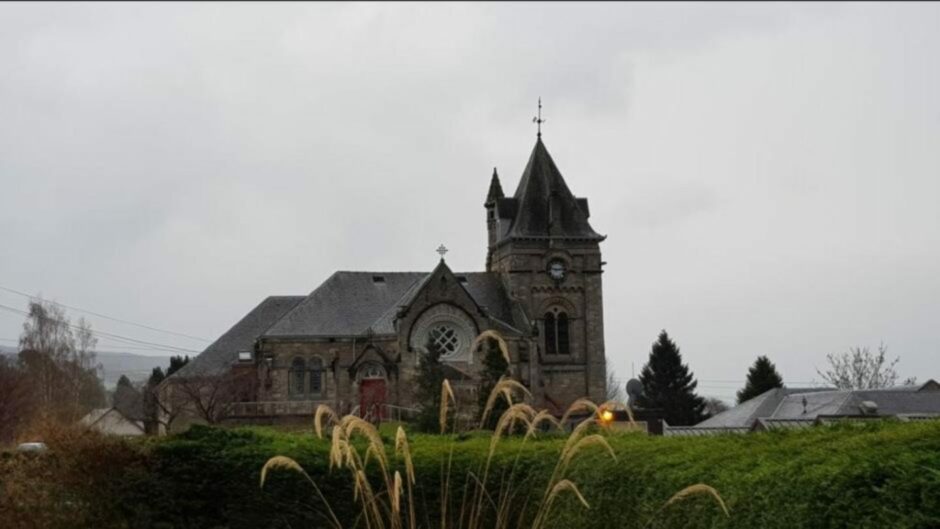
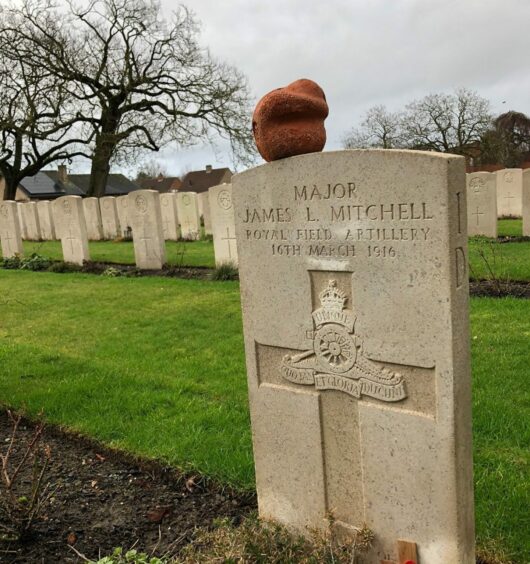
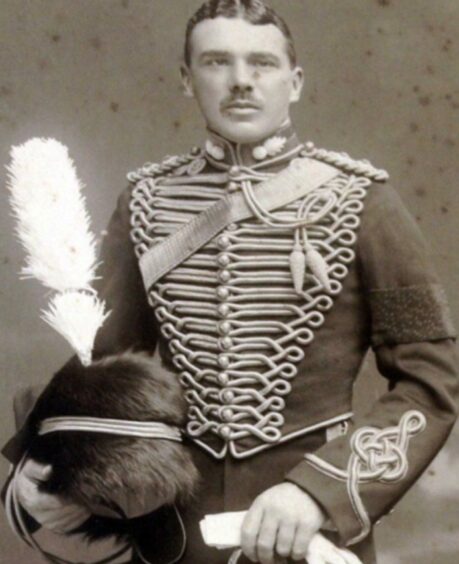
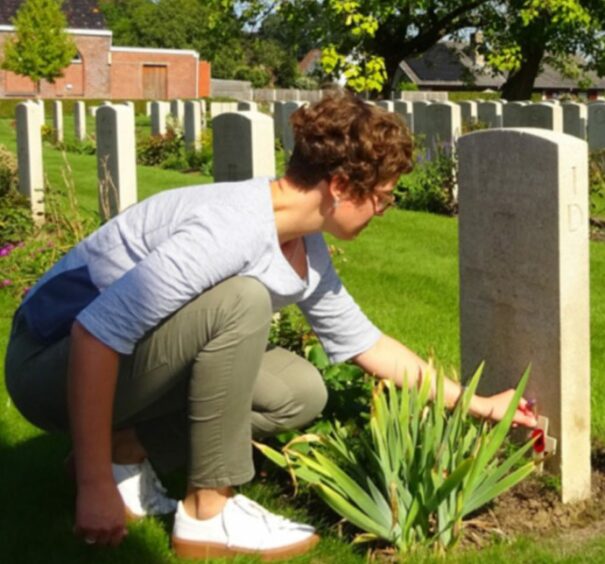
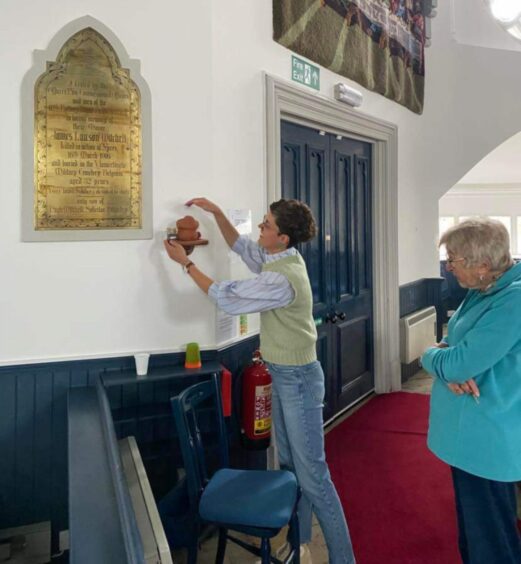
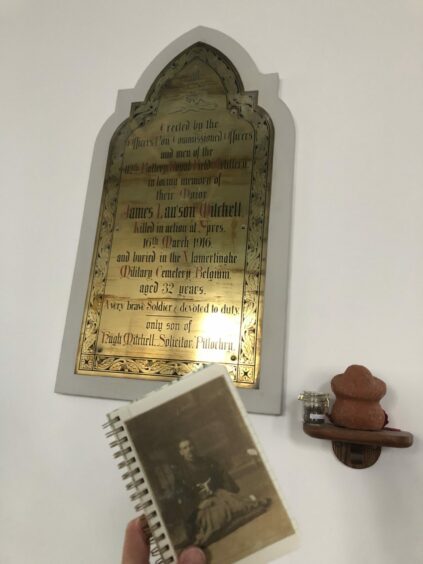
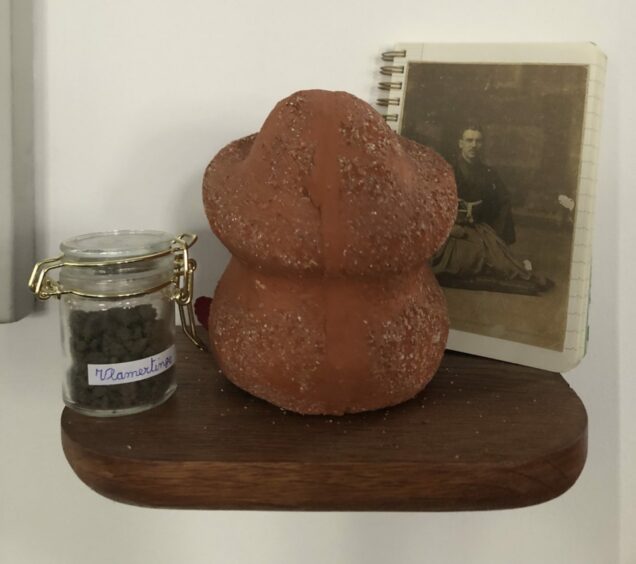
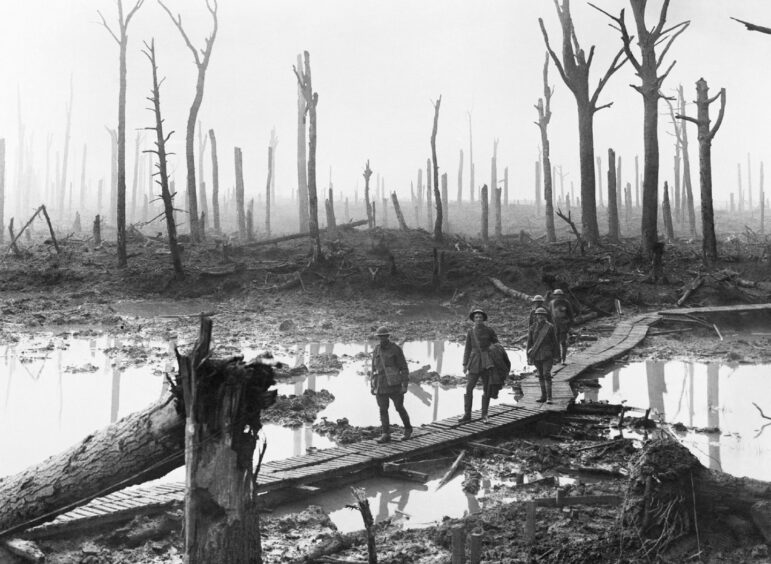
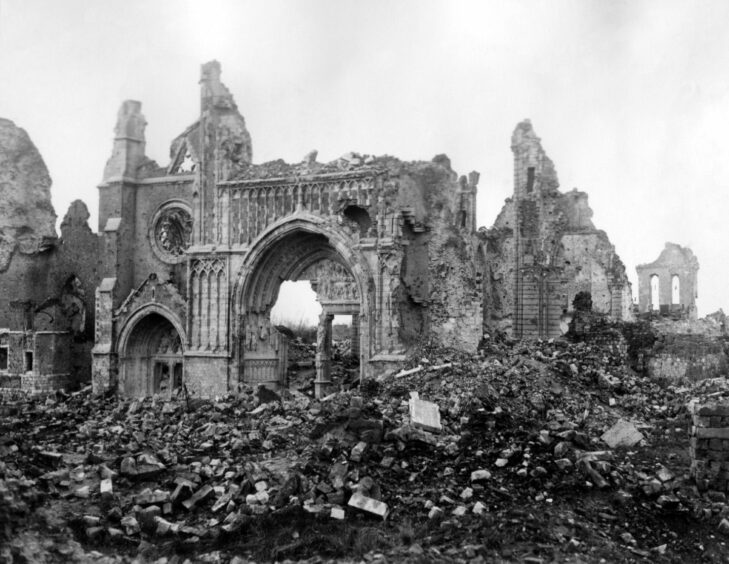
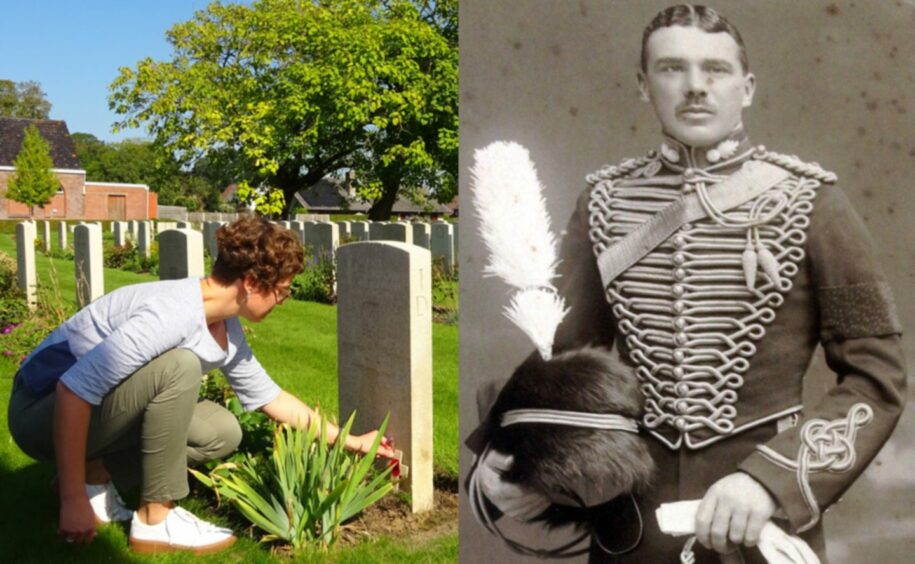










Conversation